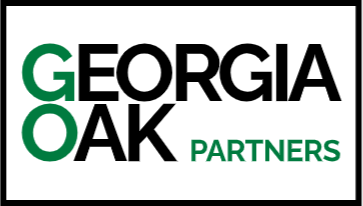Business Owner Resources
We’re committed to providing business owners with the best private equity experience possible. Part of that commitment is assisting founders in equipping themself with the proper tools to enter the selling process informed and prepared.
Valuation
Understanding your business’ worth.

Additional Resources
List of Services
PARTNERSHIP VIDEO
Watch how these values came to life with our investment in Sailfish Boats.
How Are Companies Valued?
One common element of the partnership process that all founders ask about is the valuation of their company. Every founder has thought about what their business is worth and who would be the right partner, whether it be a growth equity firm (minority investment), private equity or a large strategic acquirer. And each buyer will have a different view on valuation, depending on how they think about value creation for the business and what each party brings to the table. In this article, we’d like to share some common valuation methods with the caveat that valuations typically rely on multiple factors that are non-financial.
Where Do We Start? EBITDA.
When valuing your business, PE firms rely on clear and concise financial statements. We understand that not all businesses have or need audited financials and we welcome that! Being able to show a clean income statement and balance sheet provides PE firms a baseline to start their work and to derive “EBITDA”, the market standard for valuations. EBITDA is earnings before interest, taxes and depreciation/amortization and removes the “noise” from financial statements to allow for your business to be compared to its peers in the market. Here is a great article on EBITDA.
How Much Is My Business Worth?
There are many methods of valuing a business, but we can simplify these specific processes down to two primary methods: intrinsic valuations and market comparables.
Intrinsic Valuations
An intrinsic valuation is a model that projects the future performance of a business. This model covers any future growth projects, expansion ideas, and M&A as discussed between the founder and the investor. This model is built by taking the financials provided by the business, projecting the growth of the various product and service lines, measuring cash flows, and creating a capital structure that works for the founders and stakeholders.
One question we like to ask is, “If you had $10 million tomorrow, how would you use that toward your business?” We want to understand your vision and back you in the next phase of growth. This includes your understanding of industry trends, headwinds and tailwinds.
Market Comparables
A private equity firm uses the market comparables method when they pull similar transactions from the market space, industry or niche that your business resides in. This provides all members of the potential partnership with an understanding how these deals work and how they fit into your industry.
Georgia Oak is constantly meeting with investment bankers to assess the market. Every industry has its own unique valuation range, and this allows us to see how your company stands within that.
At Georgia Oak, the focus of these models is set more on growth and less on highly leveraged deals. We want to hear your story, and we want to know where you see growth opportunities for your business. Our job is to then latch onto those opportunities and work with you to expand on them.
What Does Georgia Oak Look for When Valuing a Business?
Walking into a meeting, we like to hear a strong founder’s vision, followed by, “I want to take care of Jim and Alice in the office.” You want to ensure these people are supported and prepared to help run the business. That tells us that you, the founder, see the importance of these employees in the pursuit of your legacy.
Most importantly, Georgia Oak understands that there’s much more at stake during the partnership process than financial incentive. For many founders, these moments can be incredibly emotional and impactful on their and their families’ lives, which is why Georgia Oak places heavy emphasis on the importance of relationship building with all of our partners.
If you’re interested in hearing more about why we value relationship building, please contact us.
At Georgia Oak, we’re committed to enhancing your business and helping founders grow their legacies
to their fullest potential. If you find we’re a good fit for your next step, please reach out to us.
Sector Focus
Manufacturing | Home Services | Business Services and Human Capital | Transportation and Logistics | Multi-Unit and Franchising
Business Owner Resources
Valuation |
Sales Process |
The Right Partner |
Founder Options |
Post Sale Relationship
Navigation
Contact Us
All Rights Reserved | Georgia Oak Partners


